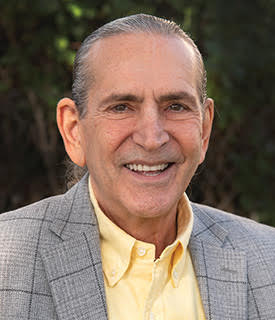What is Schizophrenia?
Schizophrenia is a severe mental illness that affects 1 percent of the American population. According to the dictionary, schizophrenia is:
"a long-term mental disorder of a type involving a breakdown in the relation between thought, emotion, and behavior, leading to faulty perception, inappropriate actions and feelings, withdrawal from reality and personal relationships into fantasy and delusion, and a sense of mental fragmentation.
- (in general use) a mentality or approach characterized by inconsistent or contradictory elements."
Schizophrenia Symptoms
People who suffer with schizophrenia will hear voices that no one else hears, feel like others read/control their minds, or think others are trying to harm them. They experience varying hallucinations, bizarre delusions, dysfunctional thinking, and agitated body movements.
Aside from those major symptoms, others include:
- "Flat affect" (a person's face does not move or he or she talks in a dull or monotonous voice)
- Lack of pleasure in everyday life
- Lack of ability to begin and sustain planned activities
- Speaking little, even when forced to interact.
- Poor "executive functioning" (the ability to understand information and use it to make decisions)
- Trouble focusing or paying attention
- Problems with "working memory" (the ability to use information immediately after learning it).
Sex Differences in Schizophrenia
The general stats between the amount of men vs. women with schizophrenia is quite equal. However, men can show symptoms in their later teens and early twenties. While women can show signs in their late twenties and early thirties. Because they have a lack of contact with reality, schizophrenia greatly interferes with a person’s ability to think clearly, manage emotions, and function to their highest potential. This makes it extremely difficult for them to hold jobs and relationships, and also makes them targets for social prejudice.
Misconceptions About Schizophrenia
One misconception is that schizophrenia is untreatable. Although symptoms are varying in nature between individuals, it can be treated with medication.
The struggle is getting an individual to take their medication when they don’t believe they’re ill. New research suggests that 50% of individuals have positive outcomes when treated appropriately.
Another misconception is that schizophrenics are violent. They are actually at a small risk for violence, very rare. Most violent crimes are not committed by schizophrenics. However, some may attempt suicide.
Causes
It occurs in 10 percent of people who have a first-degree relative with the disorder, such as a parent, brother, or sister. People who have second-degree relatives (aunts, uncles, grandparents, or cousins) with the disease also develop schizophrenia more often than the general population. When it comes to identical twins, if one has schizophrenia the other has a 40 to 65 percent chance of developing the disorder.
Other recent studies suggest that schizophrenia may result in part when a certain gene that is key to making important brain chemicals malfunctions. This problem may affect the part of the brain involved in developing higher functioning skills.18 Research into this gene is ongoing, so it is not yet possible to use the genetic information to predict who will develop the disease.
Getting Help
If you or someone you know is experiencing symptoms of schizophrenia, please see a medical professional immediately. If you are in the San Diego area, or in the surrounding cities, please contact us and we will get you in touch with a medical professional who specializes in schizophrenia. Our offices are located in Coronado and Carlsbad, San Diego.
References:
What is Schizophrenia. (2009). National Institute of Mental Health. Retrieved September 20, 2014
What is Schizophrenia. (n, d.). National Alliance of Mental Illness. Retrieved September 20, 2014
What is Seasonal Depression
It may not be a shocker to most people, but there’s a science behind people getting depressed in the winter. There’s actually a mood disorder known as Seasonal Affective Disorder (SAD) that affects an individual around the same time each year, usually winter. When thinking about the winter, usually the first thing that comes to mind is the cold. However, it’s not the cold temperatures or snowy weather that triggers this mood shift. In fact, it is related to sunlight - well, the lack of it. With shorter daylight and longer darkness, the winter can trigger an increased production of melatonin, a chemical which regulates sleep and can cause symptoms of depression.
We absorb Vitamin D from sunlight; a nutrient that makes us happy. So with less sunlight, we lack that resource. On the other hand, when the summer comes around, individuals with SAD return to a better mood. A less common type of SAD is the complete opposite, decreasing someone’s mood during the summer season. It’s also more common in women. Among those with SAD, 60%-90% are women. Crazy! Severity also varies between each person, 10-20% of people with SAD will have more mild symptoms of depression. This is usually developed in later teen or young adult years.
So what are the symptoms?
- Most people have only some of these symptoms, not all.
- Depressed mood
- Loss of interest in usually enjoyable activities
- Fatigue or loss of energy
- Feelings of worthlessness or hopelessness
- Poor concentration, indecisiveness
- Recurrent thoughts of death or suicide
- The symptoms of SAD come back every year, and for any specific person, they tend to come and go at about the same time each year.
- Winter SAD is typically characterized by
- sleeping more than usual;
- craving for sugar, starchy foods, or alcohol;
- weight gain;
- irritability;
- conflicts with other people;
- heaviness of arms and legs;
- behavior disturbances (in children).
And how do we treat it?
Because SAD is related to sunlight, the appropriate method of treatment is light therapy. This is a special lamp that mimics sunlight. It is suggested to be used in the morning, to resemble sunrise. Basically, an individual would be in front of the light with their their eyes open. You want to look towards the light but not directly at the light - just as we would never look directly at the sun but towards it. This maybe take up to a couple weeks to start noticing mood improvement. There are few to no side effects. Very few have reported headaches, eye strain, or nausea.
If you think you may have SAD, please seek help from a medical professional. Severe depression can’t be self medicated or taken lightly. If you are located in the San Diego area or it’s surrounding cities, please contact us and we will get you in touch with a medical professional. We have offices located in Coronado and Carlsbad, San Diego.
References:
Seasonal Depression (SAD). (n, d.). EMedicine Health. Retrieved September 20, 2014, from
http://www.emedicinehealth.com/seasonal_depression_sad/article_em.htm#seasonal_depression_overview
10 Things You Didn’t Know About Seasonal Affective Disorder. (n, d.). PsychCentral. Retrieved September 20, 2014, from http://psychcentral.com/lib/10-things-you-dont-know-about-seasonal-affective-disorder/0002
Seasonal affective disorder. (2013, March 08). PubMed Health. Retrieved September 20, 2014, from http://www.ncbi.nlm.nih.gov/pubmedhealth/PMH0002499/
Seasonal Affective Disorder. (2006, September 29). Psychology Today. Retrieved September 20, 2014, from http://www.psychologytoday.com/conditions/seasonal-affective-disorder
A Couple Ways to Meditate
Meditation has been proven to be calming, grounding, and healing - not only mentally, but spiritually, emotionally, and physically as well. It gives the body a moment to relax and clears all the clutter in one’s mind, providing clarity. For most, meditation is quite difficult, but as the saying goes, “practice makes perfect.” This is true, the more you meditate, the better you get at it. With every practice, you will experience more and more of the benefits of meditation. And it doesn’t have to be done in a zenned-out-hippie fashion. Below are a couple ways to meditate to get you started.
Getting Started
-
First, it is important to find a peaceful quiet area in your home or outdoors, somewhere you won’t be disturbed.
-
First thing in the morning is best time (but not the only time).
-
Don’t meditate on a full stomach, you don’t want to feel heavy.
-
Sitting in a cross legged or lotus position isn’t necessary, sitting comfortably in a chair is fine.
Variation 1
-
With you eyes open, gaze at one spot or an object.
-
When relaxed, close your eyes and point them upwards towards your eyebrows.
-
Inhale using your diaphragm (pushing out), in through your nostrils to the count of six, hold for six counts, then out through your mouth for six.
-
Rest, then do that set for a total of 6 times.
-
Then begin meditating, allow the breath to breathe naturally.
-
While observing your thoughts, to give yourself something to do, count your in-breaths up to the number ten (inhale, “one,” exhale). You can use your fingers to help keep track. If you lose track, that’s ok, just start over.
-
Begin repeating a word or phrase (mantra) over and over, this is an approach to keep from thinking while enforcing positive energy.
-
Another way to distances yourself from thoughts that arise, is to imagine them as white clouds that dissolve away.
Variation 2
-
With your eyes open, gaze at a candle flame.
-
Close your eyes and look at the bright after-image.
-
Let this light become a bright yellow sunflower with a brown seeded center and a long green stem.
-
When that image is steady, move closer to the sunflower.
-
Now imagine yourself diving into the center. Feel the rough seeds on your skin as you swim past them to the heart of the sunflower.
-
Once in the center, find a beautiful sun. Move in the sun’s warmth for a while.
-
Finally, dive deeper into the sunflower, take a seed and eat it. This is a magical seed - as you eat, you can make a wish, and it will be granted.
-
Ask to be taken home, then open your eyes and find yourself sitting where you were.
-
Take a moment to absorb the spiritual journey. Then take a moment to absorb yourself sitting in your surroundings.
Healing Power of Nature and Mental Health
Imagine yourself outdoors, amongst trees and bushes, with your eyes closed and face up towards the sky. Imagine sunlight pouring it’s soothing warmth on your skin. And the fresh smell of the earth, plants, and flowers lingering around you. How good do you feel? How good would you feel if you were actually outside experiencing this?
There’s no doubt, nature holds a magical healing power. When one goes into nature, there’s a grounding connection that should never be denied - only felt. But what is it about nature that makes it so healing? If you’re feeling down in the ruts, go outside! This is called “Ecotherapy,” also known as “Green Therapy.” Physically, there’s benefits to breathing fresh air and soaking up nutrients from the sun, however, a growing body of evidence is proving nature to be beneficial to mental health.
A study done the UK in 2007 compared the mental state of participants who took a walk in a park outdoors versus those who took a walk in a shopping center. The study revealed that:
- 71% of the group who took a walk in a park outdoors reported feeling less depressed, in comparison to 45% of the group who walked inside a shopping center.
- On top of that, 22% of those who walked in the shopping center reported actually feeling more depressed.
- 71% of the participants who walked in the park reported feeling less tense, in comparison to 50% of those who walked in the shopping center.
- And to top it all off, 90% of participants who walked in the park reported feeling an increase in self-esteem, in comparison to 44% of those who walked in the shopping center.
As humans, we are naturally interested in nature. Even if you’re not an “outdoorsy person,” you can still see the beauty in a majestic waterfall or a sunset on the beach. Humans evolved in nature, it’s our original home. Think about animals living in the wild. When they are removed from their natural habitats, their well being and behavior tends to digress. They experience a sense of disconnect. However, as humans, we may not experience this disconnect as drastically as some of these animals. Yet, if we only remain indoors for too long, we do tend to go stir-crazy at some point. We need to be outside! Nature and mental health are connected.
So make more of an effort to free your mind, body, and soul. Go outside! Let nature heal you. And you don’t have to feel out of sorts or mentally unstable either, everyone should recharge their batteries in nature.
References:
New research shows benefits of ecotherapy for mental health and wellbeing. (2013, October 23). Mind. Retrieved August 20, 2014, from http://www.mind.org.uk/news-campaigns/news/new-research-shows-benefits-of-ecotherapy-for-mental-health-and-wellbeing/#.U_5JHrywJIh
What is ecotherapy. (2009). Ecotherapy Heals. Retrieved August 20, 2014, from http://www.ecotherapyheals.com/whatisecotherapy.html
Research shows that spending time with nature has extensive mental health benefits. (2012, October 26). Natural News. Retrieved August 20, 2014, from http://www.naturalnews.com/037693_nature_deficiency_mental_health_benefits.html#
Stress is no good!
You’ve heard it before and we’ll say it again - stress is no good! Whether it’s your career, parenting, or a big adjustment in your life, we all have potential sources of stress. We can’t avoid the realities and unexpected ups and downs that come our way; however, on the bright side, we don’t have to be victims to its damaging effects
Even when it seems like all odds are against us, we have the opportunity to take control and manage our stress. Yes, we all do. When you start to feel overwhelmed, that’s a sign that your stress has taken control over you. That should be your first red flag.
In those moments, a simple go-to rescue tactic is to take a second (just a second) to detach yourself from what’s overwhelming you and take a few deep (slow) breaths. Breathing has been known to have a calming and soothing influence on the mind and body. Observe yourself in a relaxed state - about to fall asleep or laying on the couch watching TV - pay attention to your breath. It’s calm and steady.
When we start to feel anxious, some people experience physical effects such as quickened heart rates or sweaty palms. Those signs right there prove that the mind and body are connected. So try approaching it from the opposite angle, use your control of your body to calm your mind. When you take deep slow breaths it sends calming signals to your brain which relays the message to the rest of your body; lowering your heart rate, blood pressure, and soothing brain activity.
Don’t stress. Live simply. And when things start to get overwhelming, just take a breather. Something so simple can be so helpful. Just give it a try.
Reference:
- Other ways to treat patients with anxiety, emphysema, chronic pain. (2011, September 21). Psychiatric Times. Retrieved March 17, 2014, from http://www.psychiatrictimes.com/other-ways-treat-patients-anxiety-emphysema-chronic-pain
Personality Disorders
Individuals suffering with a Personality Disorder have consistent difficulties relating or responding to people and/or stressful situations. They have unhealthy patterns to their thinking and behavior, especially when it comes to social encounters. It is challenging and frustrating for these people because, to them, their thinking and behavior is normal and they feel consistently misunderstood by others. There are different types and categories, with varying symptoms, but the main characteristic of a Personality Disorder is the inability to maintain healthy relationships.
Types of Personality Disorders
Each type is divided into 4 categories, known as “Clusters” with specific characteristics.
Cluster A: Odd or eccentric thinking or behavior
Paranoid Personality Disorder
- Distrusting of others
- Guarded, suspicious, and fearful
- Unforgiving, withdrawn, holds grudges
- Threatened over misperceived insights/insults
- Angry and unnecessary hostile reactions
- Tendency to be withdrawn from people, making it challenging to engage in close relationships
Schizoid Personality Disorder
- Introverted, focusing on inner thoughts and feelings
- Aloof, detached, lacking emotional response
- Difficulties maintaining interpersonal relationships
- Lacking intimacy
Schizotypal Personality Disorder
- Odd choice of appearance, thoughts, and speech/behavior
- “Magical thinking,” the belief their thoughts can influence the world
- Social anxiety, assuming intentions of others are harmful
- Believing random events/situations have hidden agendas specific to them.
- Higher potential to developing Schizophrenia
Cluster B: Overly emotional, dramatic, unpredictable thinking/behavior
Antisocial Personality Disorder
- Angry, violent, aggressive
- More common in men than women
- Impulsive
- Turbulent and short lived social relationships
- Trouble with the law
- Disregard for other’s feelings/needs
Borderline Personality Disorder
- Lacking sense of self
- Struggles with feelings of emptiness/abandonment
- Emotionally unstable, erratic bursts of anger, impulsive behaviors
- Unstable and intense relationships
- Suicidal threats, incidences of self harm
- May result from childhood trauma, sexual abuse
- Mood swings, often reactions to interpersonal stress
- More common in women than men
Histrionic Personality Disorder
- Lacking self worth
- Depends on attention and approval of others
- Extremely emotional or dramatic for attention
- Lacking sincerity, superficial
- Sensitive to criticism and rejection
- Reacts badly to loss or failure
- Very focused on physical appearance
Narcissistic Personality Disorder
- Holds high self importance, sense of entitlement
- Desires to be admired
- Lacks empathy, selfish, self absorbed
- Arrogant, intolerant, insensitive
- Seeks revenge, prone to destructive anger
- Fantasizes about power and success
- Envies other or believes others envy them
- Feels superior to others
Cluster C: Anxious or fearful thoughts/behaviors
Avoidant Personality Disorder
- Extremely sensitive and shy
- Fears criticism, embarrassment, and rejection
- Feels inadequate, unattractive, or inferior
- Avoids new activities, situations, or relationships
- Avoids taking risks
- Also associated with anxiety disorders
Dependent Personality Disorder
- Lacks self confidence
- Extremely dependent on others
- Struggles with and needs help making decisions
- Fears abandonment resulting in submissive or clingy behavior in relationships
- Feels inadequate and helpless
- Fears disapproval
- Puts their fate in the hands of others
Obsessive-compulsive Personality Disorder
- Separate from OCD (obsessive-compulsive disorder, an anxiety disorder) which is excessive preoccupation with details, rules, order, etc.
- Doubtful, cautious, rigid
- Anxiety caused by feelings of lacking control
- Intolerant to “grey areas,” sees things as either absolutely right or wrong
- Unreasonable, high standards
- Needs to be in control of people/situations
- Relationships struggle with inflexible demands
If you relate to these symptoms or think you might be suffering from a Personality Disorder, please seek professional help. Contact a medical professional at Crownview Medical Group who can help you live life as your best self.
References:
- Hide and seek: Understanding self-deception, self-sabotage, and more. (2012, May 29). Psychology Today. Retrieved March 19, 2014, from http://www.psychologytoday.com/blog/hide-and-seek/201205/the-10-personality-disorders
- Get information: personality disorders. (n.d.). Mental Health America. Retrieved March 20, 2014, from http://www.nmha.org/go/information/get-info/personality-disorders
- Personality disorders. (2010, September 10). Mayo Clinic. Retrieved March 20, 2014, from http://www.mayoclinic.com/health/personality-disorders/DS00562
Omega-3 and Bipolar
Let’s take a look at Omega-3 fatty acids and it’s affect on our mental health. Why? Because they are not considered “essential nutrients" for no reason. Studies have shown that Omega-3 fatty acids, also known as polyunsaturated fatty acids, are natural medicines that aid brain function, as well as brain growth and development. They are known to play a big role in cognitive and behavioral functioning. It is definitely a necessity for human health, but unfortunately, our bodies don't naturally produce it. This means our bodies depend on our diet to feed it with these nutrients. Because many Americans have a diet low in Omega-3 fatty acids, their bodies (and brains) become deficient and that’s when they experience poor brain performance - memory loss, difficulty focusing, unstable mood swings.
Some sources of Omega-3 fatty acids:
- fish, such as salmon, tuna, and halibut etc. (preferably wild fish versus farmed fish)
- algae and krill
- some plants and nut oils
- flaxseed
The American diet is full of processed foods that are very high in trans and saturated fat, which we all know as the “bad fats.” Omega-3 fatty acids are the powerful “good fats” that build and develop our brain (which is pretty fatty). They also help with the production of neurotransmitters, brain chemicals that keep us in good mood, such dopamine and serotonin. It also has a relative influence on how we respond to and cope with stress. Omega-3 fatty acids literally build our brain and keep it functioning as it should - why wouldn’t we want that?!
Not only do they help stabilize our mood but it also improves our memory and learning! And aside from bipolar, Omega-3 also helps with depression, schizophrenia, ADHD, and the prevention of dementia. Of course, it doesn’t stop at improving mental health, but this essential nutrient and it’s anti-inflammatory magic are beneficial to our entire body (including our heart and cholesterol).
If our brain has what it needs to function properly, it will lead to healthy balanced moods. Studies have proven that patients who added Omega-3 fatty acids to their treatment, experienced more steady moods and longer remissions. A happy brain means a happy mood!
Bipolar and other related disorders are critical conditions and should not be self medicated. If you are on medication, we do not advise stopping your treatment before talking to your doctor. If you are experiencing symptoms of Bipolar please consult a professional.
If you or a loved one is experiencing symptoms of bipolar disorder, please contact a medical professional at Crownview Medical Group. They are trained professionals specializing in treatments and therapy that will help you live life as your best self.
References:
Omega-3 fatty acids. (2013, June 24). University of Maryland Medical Center. Retrieved March 24, 2014, from http://umm.edu/health/medical/altmed/supplement/omega3-fatty-acids
Omega 3 Fatty Acids in Bipolar Disorder: Preliminary Double-blind, Placebo-Controlled Trial. (1999, May). JAMA Psychiatry. Retrieved March 24, 2014, from http://archpsyc.jamanetwork.com/article.aspx?articleid=204999
Healthy Gut, Healthy Mind: 5 Foods to Improve Mental Health. (2013, January 29). Psychology Today. Retrieved March 24, 2014, from http://www.psychologytoday.com/blog/real-healing/201301/healthy-gut-healthy-mind-5-foods-improve-mental-health
Lack of Sleep and Brain Function
We all know what it feels like to be tired. Whether we can’t focus, feel draggy, get a little irritable, or don’t feel “in the mood” for something, we can unanimously agree that we don’t perform at our best when we’re tired. That is because sleep is extremely important for not only our body but also our minds. We experience these discomforts when we are tired because we are feeling the obvious cognitive effects resulting from sleep deprivation.
How does lack of sleep affect us?
- Delays thought process, lowers alertness and concentration. It becomes more difficult to perform tasks that require more complex thinking. This is why we shouldn’t drive or operate machinery when we are sleep deprived.
- Impairs judgment. We aren’t able to clearly assess situation compared to when we are fully alert.
- Impairs memory. While we sleep, the nerve connections that make our memories strengthen. That is when our short term memory that from that day is being embedded. There are certain ways different phases of sleep store new information as memories. If sleep is deprived or interrupted, we disrupt that process. This is why our memory isn’t as sharp or we’re more forgetful when we aren’t well rested. So of course we should allow our brains to go through all the phases necessary to store all that information overnight! If information doesn’t get embedded as a short term memory, then that information is not going to make it into a long term memory.
- Difficulties learning. Having poor memory from being tired also affects our ability to learn. Memory is definitely essential for learning, especially when we want that knowledge to be embedded long term. On top of that, we don’t concentrate clearly. We still feel physically and mentally drained, lazy, and exhausted. Altogether, this makes it difficult to retain information and learn efficiently.
- Moodiness. We become irritable and unable to cope with stress like we normally would. This could affect our job performance and relationships as well. Chronic sleepiness increases a person’s risk for depression. Sleep and mood affect each other. This explains why people who don’t get enough sleep get depression or why depressed people struggle with sleep.
To maintain a healthy functioning brain, stable mood, and mental clarity, make sure to get a good night’s rest. It is not worth sacrificing and “catching up on” later. If you want to feel awake, alert, and productive, you know what to do.
Reference:
Coping with excessive sleepiness. (n.d). WebMD. Retrieved April 4, 2014, from http://www.webmd.com/sleep-disorders/excessive-sleepiness-10/emotions-cognitive
Healthy Distractions
Yes, distractions can be healthy! There’s a saying, “Energy flows where attention goes.” What does this mean and if we are distracted isn’t that taking our attention away from something we’re focusing on? Absolutely! Where we direct our attention is what we invest time and energy in. However, sometimes we invest ourselves in something we shouldn’t be focusing on. This is when a healthy distraction becomes beneficial.
Examples of this would be focusing on a craving or negative thoughts. Focusing on a craving opens potential for addiction relapses, while focusing on negative thoughts could result in an emotional downward spiral of depression or anger. These end results could also lead to further self destruction and poor health (mentally, physically, and emotionally). When we feed these negative urges with our attention, they grow bigger and bigger until they consume us.
Instead of running in circles or fighting the internal battle within ourselves, just simply turn your attention to something else. It’s a very simple concept, yet extremely difficult in the heat of the moment. So how do you catch yourself before you fall? Prepare a list of simple enjoyable tasks/activities that require your attention in order to be completed. This way, when you’re already facing internal struggles, you won’t need to think of a solution to pull you out. Just do something on your list.
Here’s some ideas for healthy distractions:
- Expressive Writing - Keep a journal and write every thought and feeling you have. Don’t worry about grammar. Don’t worry about spelling. And who cares about handwriting. Just write!
- A puzzle - Table puzzle, Crossword, Sudoku, matching games, strategy games.
- Take a walk - Walk outside, feel the sun’s warmth, look at the purity and simplicity of plants, observe your surroundings, breathe the open air.
- Clean your house - Aside from redirecting your focus, there’s a satisfying and peaceful feeling that comes with a clean surrounding.
- Organize something - If your house is already clean, organize!
- Do something creative - Draw, paint, color. If you don’t know what to make, just draw shapes in different colors. It really doesn’t matter what you do, as long as you’re creating.
- Read - Read something you enjoy, of any topic. Some people say they aren’t readers, however, if they find something to read that is of their interest (even if it’s gardening, cooking, or sports) it becomes more enjoyable.
- Play music - Just sit and listen to your favorite songs, bands, or genre. You might even get up and dance!
- Meditate - Focus on deep breathing and be still.
- Stretching - You’ll feel great after!
- Play an instrument - Whether you know how to play one or not, you can always learn.
- Have a snack - This doesn’t mean binge or eat your feelings. Something healthy will do the trick. Adding nutrients to your body will feed your brain and balance your mood. Plus it’s yummy!
- Exercise - Go to the gym, run, ride a bike, or go for a hike. Any form of movement and fitness should do the trick. It's healthy for your mind and body.
Practicing and incorporating healthy distractions can be a great method for anger management as well. Before you make haste irrational decisions, redirect your attention towards a task or activity and you will notice your anger subside.
If you are struggling with addiction, depression/suicidal thoughts, or anger management, please seek help from a guidance or health professional. If you are a resident of San Diego, CA (or it’s surrounding cities), please contact us for advice and assistance.
References:
Where science meets the steps: the new science of addiction. (April 3, 2014). Psychology Today. Retrieved April 6, 2014, from http://www.psychologytoday.com/blog/where-science-meets-the-steps/201404/what-is-healthy-distraction
Using distraction as a way of coping with emotions: distraction techniques can help you keep strong emotions in check. (January, 22, 2009). About.com Health. Retrieved April 6, 2014, from http://ptsd.about.com/od/selfhelp/qt/distraction.htm
What is PTSD?
When we think of PTSD (Post-Traumatic Stress Disorder), people most often think of war veterans who are damaged by traumatic experiences and struggle coping with triggers. However, interestingly, PTSD doesn’t only pertain to war veterans. It stems from any sense of trauma. According to the U.S. Department of Veteran Affairs: National Center for PTSD,
“Posttraumatic Stress Disorder (PTSD) can occur after you have been through a traumatic event. A traumatic event is something terrible and scary that you see, hear about, or that happens to you, like:
- Combat exposure
- Child sexual or physical abuse
- Terrorist attack
- Sexual or physical assault
- Serious accidents, like a car wreck
- Natural disasters, like a fire, tornado, hurricane, flood, or earthquake”
PTSD can develop at any age since trauma happens at any age - even childhood. Individuals suffering from PTSD may also struggle with depression, other emotional instabilities, or substance abuse. Symptoms range from mild to severe. When symptoms are severe it interferes with daily functioning and healthy ways of coping. Symptoms vary in intensity and duration. In some cases people recover within 6 months and others don’t see symptoms until years after the event.
Symptoms of PTSD include:
- Flashbacks, intrusive memories, reliving the experience
- Thoughts of danger, for yourself or others
- Negative moods, feelings, or beliefs
- Guilt, shame
- Avoiding situations that seem similar to the event
- Anxiety, severe emotional stress
- Self destructive behavior such as substance abuse or self afflictions
- Trouble sleeping
- Easily startled or frightened
- Nightmares
When to see a doctor:
- When symptoms intensify or get worse over time
- You feel out of control of your symptoms
- If you have disturbing thoughts or feelings for more than a month
- If you have suicidal thoughts or consider self harm
Behavioral therapy and cognitive-behavioral therapy have been proven to be effective for treating anxiety disorders. Medications may relieve symptoms of anxiety, however, they aren’t cures. If you’ve suffered from a traumatic event and experience symptoms of PTSD, please see a professional therapist or doctor for treatment. If you are in San Diego or it’s surrounding cities, Crownview Medical Group have clinics and available doctors in Carlsbad and Coronado.
Please don’t hesitate to contact us.
References:
What is ptsd. (n.d). American Academy of Experts in Traumatic Stress. Retrieved April 14, 2014, from http://www.aaets.org/article125.htm
What is ptsd. (January 17, 2014). U.S. Department of Veteran Affairs: National Center for PTSD. Retrieved April 14, 2014, from http://www.ptsd.va.gov/public/PTSD-overview/basics/what-is-ptsd.asp
Post-traumatic stress disorder (ptsd). (April 15, 2014). Mayo Clinic. Retrieved April 15, 2014, from http://www.mayoclinic.org/diseases-conditions/post-traumatic-stress-disorder/basics/definition/con-20022540
Families and Interventions for Addiction
Struggling with addiction is challenging, traumatic, and tragic to witness. Families and friends of those who fall victim to this battle, will testify that the pain and suffering of addiction doesn’t only have a heartbreaking effect on addicts. Addicts never struggle alone, sadly, their families and friends are pulled into their downward spiral.
Whether it’s drugs, alcoholism, eating disorders, or other destructive behaviors, it’s hard to sit back and watch a loved one deteriorate. For some, a simple heart to heart is enough to get a loved one started on the road to recovery. However, for most, their loved ones are in resistant, failing to see the negative effects of their lifestyle. This is when families and friends should consider getting professional assistance and arranging an intervention. For those considering an intervention without a professional, it is highly recommended to have assistance from an interventionist who can facilitate and provide a structured process.
Many people are familiar with the A&E show Intervention. In this show, we witness groups of families and friends with a professional interventionist, who present their loved one with a structured planned process for recovery and therapeutic group discussions. Interventions are meant to encourage addicts to stop their destructive lifestyle, get treatment and therapy, etc. to regain health and wellness. It is important for not only addicts to receive therapy during this process, but members of the intervention group should also get therapy and find support groups.
An intervention is meant to open doors to recovery for families, friends, and addicts, but doesn’t guarantee a cure. There is the reality of an addict relapsing, which is why continued therapy and support from professionals, families, and friends are highly important. It takes a great deal of strength from everyone involved.
Families and friends seeking professional assistance for an intervention don’t have to sign up for the A&E show, there are options available in your local area. If you are located in San Diego or a surrounding city and struggling with a loved one suffering from addiction or destructive behaviors, please contact us at Crownview Medical Group. We have offices in Carlsbad and Coronado offering assistance with interventions.
Intervention: Help a loved one overcome addiction. (2011, August 23). Mayo Clinic. Retrieved June 20, 2014, from http://www.mayoclinic.org/diseases-conditions/mental-illness/in-depth/intervention/art-20047451
7 Common Misconceptions About Addiction Interventions. (2013, August 23). Psychcentral. Retrieved June 20, 2014, from http://psychcentral.com/blog/archives/2013/08/26/7-common-misconceptions-about-addiction-interventions/
The 411 on Addiction Interventions: What is an intervention and how do I find a reputable interventionist. (2012, August 14). Psychology Today. Retrieved June 20, 2014, from http://www.psychologytoday.com/blog/the-high-functioning-alcoholic/201208/the-411-addiction-interventions
Yoga for Mind and Body
Yoga is an ancient practice in cultures and religions around the world, dating back before written history. Yoga has extremely healing for not only the body, but also for the mind and spirit. Until recent years, the benefits of Yoga have been overlooked or underestimated. However, more studies and research have proven yoga to be a very effective in achieving overall wellness and improving one’s response to stress.
Physical Benefits of Yoga
- Improves chronic back pain
- Speeds nerve impulses
- Lowers blood sugar levels
- Obesity
- Lowers blood pressure, cholesterol, heart rate, and other heart disease related symptoms
- Decreases risk of cardiovascular disease and hypertension
- Builds strength and coordination
- Improved flexibility
- Improves fatigue
- Increased energy
Mental Benefits of Yoga
- Improves response to stress
- Relaxation
- Improves depression and anxiety
- Improves insomnia and sleep
- Improves focus
- Decreases adrenaline
- Increased dopamine
- Improved mood and functioning
- Increased alertness and feeling “present” or “in the moment”
- Improved awareness
- Helps to achieve emotional balance
For some individuals, yoga alone can be enough to restore balance, health, and wellness. For others, yoga would be most beneficial when combined with counseling, medication, and/or nutrition. Everyone’s journey to wellness varies with different circumstances, needs, and outcomes. It is always best to meet with a medical professional who can provide guidance and determine the best treatment for you based on your needs.
If you are located in San Diego or any the surrounding cities, feel free to contact Crownview Medical Group to meet with a medical professional. We have offices located in Carlsbad and Coronado.
Yoga for anxiety and depression. (2009, April). Harvard Health Publications. Retrieved June 29, 2014, from http://www.health.harvard.edu/newsletters/Harvard_Mental_Health_Letter/2009/April/Yoga-for-anxiety-and-depression
Take a stand for yoga today. (2013, May 23). Psychology Today. Retrieved June 29, 2014, from http://www.psychologytoday.com/blog/get-hardy/201305/take-stand-yoga-today
Health benefits of yoga explained. (n.d.). Yoga Health Foundation. Retrieved June 29, 2014, from http://yogahealthfoundation.org/health_benefits_of_yoga_explained
Why are Heartbreaks Painful
We all know breakups are hard and most times painful, but why? Why do we suffer? Why do we spend almost every waking hour missing our (ex) partner? Why does it take so much time to heal? Well a study, by the Greater Good Science Center of UC Berkeley, investigates the neurobiology of being in love and why we experience pain and heartache after a breakup or loss of a loved one.
To understand heartbreak, we must first understand being in love. In this study, psychologist Art Aron, neurologist Lucy Brown, and anthropologist Helen Fisher conducted fMRI scans on individuals who reported being deeply in love to study brain reactions. Brain scans were performed while participants looked at images of their loved ones. The scans revealed releases of dopamine resulting in higher blood flow in the caudate nucleus - this section of the brain is responsible for motivation and goal setting, as well as the rewards system. Dopamine released in the caudate nucleus is also activated by nicotine, cocaine, and other drugs. So basically, when we are in love, we are addicts. This explains the euphoric high one feels when in love and the motivation behind a relationship - as well as the withdrawal effects after a breakup.
In a follow up study, performed by the same doctors, brain scans were used to observe brain activity when recently heartbroken participants viewed images of their ex partners. Participants reported thinking about their ex partners on average 85% of their waking hours following the breakup. They also showed signs of no emotional control, with excessive efforts to reconcile through phone calls, emailing, making unannounced visits, crying, and even turning to alcohol. Participants also admitted to being depressed and hurt.
Interestingly, even when heartbroken, the brain still shows signs of being “in love” with the award system/motivation mode still active. This is because the brain is still programed to produce increases in dopamine and increased blood flow to the caudate nucleus, as they are still devoted to their ex partner. Another observation made was one part of the brain trying to override another. This happens when a person feels an impulsive urge to fix things or call an ex, but then the orbital frontal cortex interrupts with a reminder that letting go and moving on would be best.
Heartbreak is believed to be a social pain that is meant to “maintain social ties between mates and within communities in order to increase animals’ chances of survival.” Our mammal instincts have a need for attachment. Painful heartbreaks help us become more aware of how impactful our attachments are. We are meant to learn and grow to better our next relationships.
If you are struggling to cope with an emotional event in your life. Please contact a medical professional at Crownview Medical Group. We are trained professionals who specialize in treatments and therapy to help you live life as your best self.
Reference:
Heartbroken: What Does Neuroimaging Show About Your Pain. (2014, July 18). Psychology Today. Retrieved July 20, 2014, from http://www.psychologytoday.com/blog/resolution-not-conflict/201407/heartbroken-what-does-neuroimaging-show-about-your-pain
Mental Illness and Substance Abuse
Often times, people look at addiction as a mental illness in itself. But many times, addiction plays the role of a sidekick to a mental illness. There is a definite connection between mental illness and substance abuse. Those suffering with mental illness have a higher risk for substance abuse. The National Bureau of Economic Research has reported the following:
People who have been diagnosed with a mental health disorder at some point in their lives are responsible for the consumption of:
- 69% of alcohol
- 84% of cocaine
- 68% of cigarettes
Another study has shown that people with severe mental illness were about:
- 4 times more likely to be heavy alcohol users (4 or more drinks per day)
- 3.5 times more likely to use marijuana regularly (21 times per year)
- 4.6 times more likely to use other drugs at least 10 times in their lives
- and those suffering from mood and anxiety disorder are twice as likely to suffer from substance abuse.
So what’s the link between these two? The most common issue between mental illness and substance abuse is self medication. An individual turns to harmful substances to cope with symptoms of mental illness, which they find disruptive or uncomfortable.
For example, someone struggling with social anxiety may drink more in a social setting to calm their nerves. Or someone depressed may abuse marijuana to feel better.
However, what these individuals fail to realize, is that drug and alcohol abuse can increase the severity of their symptoms. Symptoms of one disorder can trigger another and make matters worse. Substance abuse is never a cure to symptoms of mental illness, if fact, the two make a dangerous combination.
It is highly important that individuals get treated for both mental illness and substance abuse. Some people, and/or their loved ones, may know they struggle with addiction and seek treatment for it. However, what they may not realize that they also need treatment for mental illness.
Researchers used data from the 2012 National Survey on Drug Use and Health to show that:
- Close to 8.4 million adults in the United States have both a mental and substance use disorder.
- Only 7.9% of people receive treatment for both conditions
- 53.7% receive no treatment at all
If you or a loved one are suffering from mental illness and substance abuse, please contact a medical professional for advice and treatment. If you are located in/near San Diego, CA, please contact us at Crownview Medical Group to get in touch with our medical professionals who specialize in mental illness and substance abuse.
References:
Severe mental illness ups risks for substance abuse. (2014, January 6). Psych Central. Retrieved August 15, 2014, from http://psychcentral.com/news/2014/01/06/severe-mental-illness-ups-risk-for-substance-abuse/64161.html
The connection between mental illness and substance abuse. (n,d). Dualdiagnosis.com. Retrieved August 15, 2014, from http://www.dualdiagnosis.org/mental-health-and-addiction/the-connection/
Mental illness and substance abuse. (n,d). The National Bureau of Economic Research. Retrieved August 15, 2014, from http://www.nber.org/digest/apr02/w8699.html
How Alcohol Affects the Brain
This about it, what does someone experience when they’re drunk? Slurred speech, blurred vision, poor memory, slowed reaction, difficulty walking, and impaired judgement. Obviously, alcohol has an affect on the brain. And clearly, not a positive one. Heavy drinking can also result in more severe brain deficits that persists even after a person has reached sobriety.
So what is alcohol's effect on the brain?
For starters, drugs are either a stimulant or a depressant. Stimulants may influence dopamine or norepinephrine. Depressants target a chemical called GABA, the primary inhibitory neurotransmitter within the brain. It’s said that alcohol is a depressant, but people may say, “I feel like my mood increases and I’m more outgoing and energetic when I drink. How does that make it a depressant?” Well, when our Blood Alcohol Content increases, we feel that boost and impulsiveness associated with stimulants. But once it goes up, it comes back down, and that’s when we feel the later effects of depression, fatigue, or confusion. So perhaps alcohol is more than just a depressant.
So basically, alcohol ends up disrupting brain chemistry by alternating levels of neurotransmitters. And while sparing you the scientific lingo, that in itself can explain how we have poor memory or impaired judgement when drinking. Our brains just don’t process things as it usually does. Those who drink excessively are at risk for more serious brain damage, since alcohol is constantly interfering with proper functioning. At some point, parts or processes of the brain sort of give up, resulting in brain damage.
Here are some other factors that influence how alcohol affects the brain:
- how much and how often a person drinks;
- the age at which he or she first began drinking, and how long he or she has been drinking;
- the person’s age, level of education, gender, genetic background, and family history of alcoholism;
- whether he or she is at risk as a result of prenatal alcohol exposure; and
- his or her general health status.
If you or a loved one is struggling with addiction, please contact Crownview Medical Group and make an appointment with a trained medical professional, specializing in addiction treatments and case management.
References:
Alcohol’s damaging effects on the brain. (2004, October). National Institute of Alcohol Abuse and Alcoholism. Retrieved September 20, 2014, from http://pubs.niaaa.nih.gov/publications/aa63/aa63.htm
Alcohol and Mental Health. (n, d.). Drink Aware. Retrieved September 20, 2014, from https://www.drinkaware.co.uk/check-the-facts/health-effects-of-alcohol/mental-health/alcohol-and-mental-health
What Happens To Your Brain When You Get Black-Out Drunk. (2013, February 22). Gizmodo. Retrieved September 20, 2014, from http://gizmodo.com/5977688/what-happens-to-your-brain-when-you-get-black-out-drunk
Your brain on alcohol. (2010, June 18). Psychology Today. Retrieved September 20, 2014, from http://www.psychologytoday.com/blog/you-illuminated/201006/your-brain-alcohol
Creative Art Therapy
Therapy and counseling are definitely beneficial to one’s well being. One way to step it up a notch can be to complement it with creative art therapy. Creative art therapy is a great addition to intervention therapy as well. With creative arts, individuals are able to express their thoughts and emotions, achieve self realizations, boost confidence, broaden personal perspective, and also focus on a healthy distraction.
As a form of psychotherapy, art therapy often involves both the creation of art and the discovery of its meaning. For those with mental illness, it’s the creative process that becomes therapeutic - visualizing, creating, and having a finished product that expressed thoughts and emotions they couldn’t put into words.
Even though creative art therapy comes in handy for nonverbal expression and growth, it can be very social as well. For example, a dance class. Someone could be expressing themselves through the movement of their body, which also physically feels good, among a friendly group of other dancers. This is also an opportunity to build friendships and connect with others, as well as ourselves.
Creative art therapy gives practitioners a way to understand the inner worlds of people with mental illness. Maybe they aren’t able to express themselves verbally, but we can visually understand them.
The obvious types of creative art therapy would be painting, learning how to play music, or dancing. But it can go a lot deeper than that. Therapists can use art as methods or techniques as aides to understand individuals. For example, a therapist working with a child might start a drawing of a child and ask them to add details around the child, such as something that she does that makes her happy. Therapists will also use imagery as metaphors or see details in a patient’s drawing as metaphors. Visual journals, magazine collages, making masks, creating art with a group or alone, or creating sculptures are all examples of possible creative art therapies.
References:
Art therapy and mental health. (n, d.). International Art Therapy Organization. Retrieved September 20, 2014, from http://www.internationalarttherapy.org/mentalhealth.html
Dark Chocolate can Improve our Memory?
Guess what? Chocolate is actually good for you! Some of us may have already heard this awesome news, because chocolate is actually considered to be a super food. However, this does not include milk chocolate - sorry sweet milk fans, but we are talking about bitter dark chocolate. Even though not everyone is a fan of dark chocolate, it is packed with nutritiously beneficial goodness. Actually, the darker the chocolate, the healthier. It is usually recommended to eat around 85% dark chocolate. And why is that? Well, cocoa contains flavanols which have high antioxidant properties. So the darker the chocolate, the more flavanols it contains.
Dark chocolate is recommended for those on an anti-inflammatory diet because of its health benefits such as lowering blood pressure and improving blood circulation. Other interesting health benefits are improved mood, energy, and mental focus. So it doesn’t only help us physically but also emotionally and mentally. A recent study has revealed that it also helps to improve or memory!
“In a small study in the journal Nature Neuroscience, healthy people, ages 50 to 69, who drank a mixture high in antioxidants called cocoa flavanols for three months performed better on a memory test than people who drank a low-flavanol mixture.
Besides improvements on the memory test — a pattern recognition test involving the kind of skill used in remembering where you parked the car or recalling the face of someone you just met — researchers found increased function in an area of the brain’s hippocampus called the dentate gyrus, which has been linked to this type of memory.”
However, milk chocolate, candy bars, and most cocoa powders (even unsweetened) go through a process called dutching and alkalization. This loses most of the important flavanols. This is why it is also suggested to stick with cacao. The difference between “cacao” and “cocoa” is that cacao is the raw form and cocoa is the form after being processed (alkalized).
So stick with dark cacao chocolate and improve your memory and get healthy!
Resources:
Improve a memory, consider chocolate. (2014, October 26). The New York Times. Retrieved October 26, 2014, from http://www.nytimes.com/2014/10/27/us/a-bite-to-remember-chocolate-is-shown-to-aid-memory.html
Why do we have Recurring Dreams?
Do you have the same dreams over and over? A particular situation with slightly varying details, but generally causing the same anxiety? Or maybe it is the exact same dream each time? Either way, there’s a good chance that you have experienced recurring dreams. The question is, why do these stressful dreams keep repeating themselves?
Some examples of recurring dreams:
- Someone is chasing you, you’re always running away and hiding. You might even feel like your legs are so heavy or you’re running in slow motion, frustrated trying to run faster.
- You’re falling!
- You look in the mirror and your teeth are totally busted! Your teeth falling out or missing.
- You’re flying!
- You’re up high somewhere, standing on something, looking down. You’re trying not to lose balance because you are way up high.
- You’re back in school after years of being graduated. And there’s an exam that you are unprepared for.
Dr. Daniel Condron, Director and Dream Researcher at the school of Metaphysics, says “most recurrent dreams are relevant to the person who is dreaming.” He suggests that the dream represents a question or message (often related to a limitation, habit, fear or doubt) to the dreamer. When the dreamer understands the message and figures out how to sort it out in their daily lives, the recurring dreams will stop.
Different people and sources can interpret the meaning to these dreams, but only the dreamer can genuinely understand it. This is because everyone’s lives are different and these recurring themes could point to specific messages different from person to person.
Are there any symbols in these dreams? Are there people, places, or things in these dreams that have any personal meaning to them in your real life? It is important to personalize the interpretation of your dreams to figure out the messages that are trying to be revealed to you.
Resources:
Recurring dreams and their meaning. (2010, March 29). The Huffington Post. Retrieved October 15, 2014, from http://www.huffingtonpost.com/dr-michael-j-breus/recurring-dreams-and-thei_b_437633.html
A Link Between Intelligence and Happiness
Have you ever thought about intelligence having an influence on happiness? Does being smarter make you happier? If so, why?
Positive Psychology is a fairly new movement within psychology, which focuses research and interventions on human flourishing rather than psychological maladies. Topics commonly discussed in Positive Psychology include happiness, optimism, and resilience. However, surprisingly, people tend to overlook intelligence - regardless of the fact that it’s one of the oldest and best researched in psychology. This is not to be mistaken as intelligence being dismissed or not cared about by any means. One way of thinking, is that intelligence is more like a trait - just like being introverted/extroverted or left handed.
A recent study looked into the association between intelligence and happiness, but not just levels of happiness but happiness stability. The study used a sample of almost 10 thousand British people. The researcher also gathered individual information such as childhood IQ scores, personality data, income, job satisfaction, and marital status. He even got information on their happiness at ages 33, 42, 47, and 51. Considering all these contributing factors, he analyzed the relationship between intelligence and happiness stability.
Come to find out, IQ (even assessed in childhood) can predict the emotional ups and downs a person will have over the course of their lives. Those who had lower, below average, IQs did experience more inconsistency in their life satisfaction compared to those with above average IQs. An important note make is that this is not due to differences in education, income, or jobs. However, this was impacted by differences in health.
Happiness and intelligence is something we should all think about. Does this study mean anything to you? Maybe intelligence is just a varying trait among us. If so, does that make it unfair to many people? However, we should really look into the way people learn, process, remember, recall and solve problems - all related to intelligence. Perhaps studying these questions more will help us connect more dots on happiness and intelligence.
Resources:
Does intelligence predict happiness. (2014, October 14). Psychology Today. Retrieved October 15, 2014, from http://www.psychologytoday.com/blog/significant-results/201410/does-intelligence-predict-happiness
Communication Tips for Introverts
Most introverts are commonly challenged when it comes to communication and wanting to make a great first impression and standing out from the crowd. The common misconception is that introverts should fake it and act as extroverts to be successful in communicative situations. That is not true. The best strategy is to leverage the qualities of an introvert with the best communication skills. This will alleviate the stress that comes with faking extroversion.
Here are some tips:
1. Have a positive overall view of your temperament and personality
Being introverted is not a flaw. We can acknowledge the things that are challenging, but don’t view it as a downfall.
2. Stay cool and save energy by picking a suitable physical environment
If possible, arrange communication to take place somewhere that won’t get you anxious. A place that’s quiet with little noise is recommended because noisy environments will force both of you to speak louder, which can also be disruptive and distracting. The temperature and decor should set a comfortable vibe to relax. You don’t want to be thinking how cold you are and maybe your partner is cold also, you want to limit distractions to stay comfortable.
3. One-On-One conversations
For some, this can be just as uncomfortable as giving a speech. The best thing to do is let the other person talk while you engage and lead the conversation. To start the conversation, ask an open question. If you want the conversation to continue, select a piece of information that your partner shared and ask them to elaborate further. The key is to listen, don’t worry about talking. Listening and asking questions to keep your partner talking is participating and engaging and shows that you are attentive.
4. Buying time to organize your thoughts
There is nothing wrong with telling your partner that you need time to gather your thoughts. It’s best to have clear thoughts which are concisely shared. Don’t be afraid to use phrases such as “Let me take a moment to think this through…” or “Ok let me wrap my head around this.” But don’t create awkward moments of silence. This buys you time to just organize your thoughts.
5. Taking a break
If conversations start to get lengthy and you need a break, it’s okay to simply say that you need to go to the restroom, get a drink of water, get something from your desk, or that you will be right back. Use this time to collect yourself, take some breaths, and refresh.
6. Distinguishing introversion or lacking confidence
Introversion and lacking confidence can be misunderstood as one or the other. If you’re not confident in your abilities or question if you’re liked by others, you might be lacking confidence. This can benefit from being worked on. And if being introverted makes you less confident, remember that it is not a flaw and introverted qualities should be leveraged, such as being an attentive listener.
Resources:
Confident communication skills for introverts. (2014, October 12). Psychology Today. Retrieved October 15, 2014, from http://www.psychologytoday.com/blog/communication-success/201410/confident-communication-skills-introverts
7 success tips for introverts. (2013, February 6). Psychology Today. Retrieved October 15, 2014, from http://www.psychologytoday.com/blog/in-practice/201302/7-success-tips-introverts












































